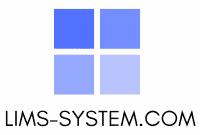LIMSSystem
Everything you need to know
What is a LIMS system anyway?
A LIMS system is software used to manage laboratory workflow. It stands for Laboratory Information Management Software and allows you to track the movement of samples, as well as keep track of data associated with those samples. This can include things like test results, patient information, and contact information for lab personnel. A LIMS system can help to ensure that samples are processed in a timely manner and that all necessary data is available when it is needed.
What are the benefits and advantages of a LIMS system?
A LIMS system, also known as a Laboratory Information Management System, is a software solution that enables the laboratory to manage and streamline its workflow. A LIMS can actually do many things for a laboratory, but some of the most common benefits are increased efficiency, improved data quality, and decreased costs.
One of the primary advantages of a LIMS system is that it can help to increase efficiency in the laboratory. With a LIMS in place, scientists can spend less time on administrative tasks and more time on research. In addition, by automating processes and implementing barcoding technology, a LIMS can help to improve data accuracy and integrity.
Overview of advantages of [FP]-LIMS solution
Central management of all lab data
Improving collaboration
Optimization of laboratory processes
Minimization of the time required
Cost reduction
Full integration
Traceability of all laboratory-related data
Extensive functions
Impressive flexibility
Optimal price-performance ratio
Proven laboratory solution
Global awareness
Important functions of LIMS systems
A LIMS system is designed to improve the efficiency and accuracy of a laboratory by reducing the number of manual operations. The system can be used to track samples, manage data, and automate tasks. By automating these tasks, the laboratory can reduce the amount of time needed to complete these operations. Additionally, a LIMS system can help to ensure data accuracy by providing a single source of information for all laboratory personnel.
- Analyses Management
- Workflow Management
- Record keeping
- Inventory management
- Reporting
How to choose a LIMS system
When looking for a LIMS system, there are many factors to consider. The first step is to understand your laboratory’s and overall organization’s needs. What are the specific tasks that need to be automated? What features are required in order to make those tasks more efficient? How important is it to have a system that can integrate with other software applications used in your business?
Once you have a good understanding of your needs, you can start evaluating different LIMS systems. There are many different options available, so it’s important to do your research and compare the features and pricing of different systems. It’s also important to find a system that will be easy to use and learn.
The final step is to decide which system is the best fit for your laboratory and overall organization.
Factors to consider when choosing a LIMS system
Selecting the best LIMS for your laboratory and overall organization depends on a wide variety of factors that define your business needs. Some of the key factors you should consider are:
The size of your laboratory and how many users will need access to the system
The types of tests and analyses you perform
The level of automation you need
The degree of integration needed with other systems in your organization
The budget you have available for a LIMS system
What is the right LIMS system provider for your needs?
When it comes to Laboratory Information Management Systems (LIMS), there are a lot of different providers to choose from. So, how do you know which provider is the right one for your needs?
First, you need to decide what features and functions you need in a LIMS. Do you need a system that can manage sample tracking and lab inventory? Do you need electronic lab notebooks or reporting features? Once you know what features are important to you, you can start narrowing down the list of providers based on those requirements.
Another important consideration is price. How much are you willing to spend on a LIMS? Be sure to ask each provider for a price quote so that you can compare them apples-to-apples. Finally, don’t forget to consider the vendor’s reputation and customer service.
A distinction can be made between LIMS that are available for a fee and those that are free of charge. But what is the best LIMS?
LIMS Services: Consulting by lab experts
The introduction of a LIMS system requires in-depth knowledge of the special requirements of laboratory processes. The goal is to create a homogeneous IT infrastructure in which the diverse systems are optimally networked in order to use your resources efficiently. Therefore, it is not uncommon for LIMS system providers to also offer a variety of LIMS services due to their decades of experience in the market and in a wide range of industries.
LIMS system providers like Fink & Partner with its [FP]-LIMS solution offer a complete service portfolio for the entire life cycle of a LIMS. Together with the extensive experience in laboratory management, LIMS manufacturers can support a wide service portfolio from conception and implementation to operation and administration of the LIMS and the underlying database.

